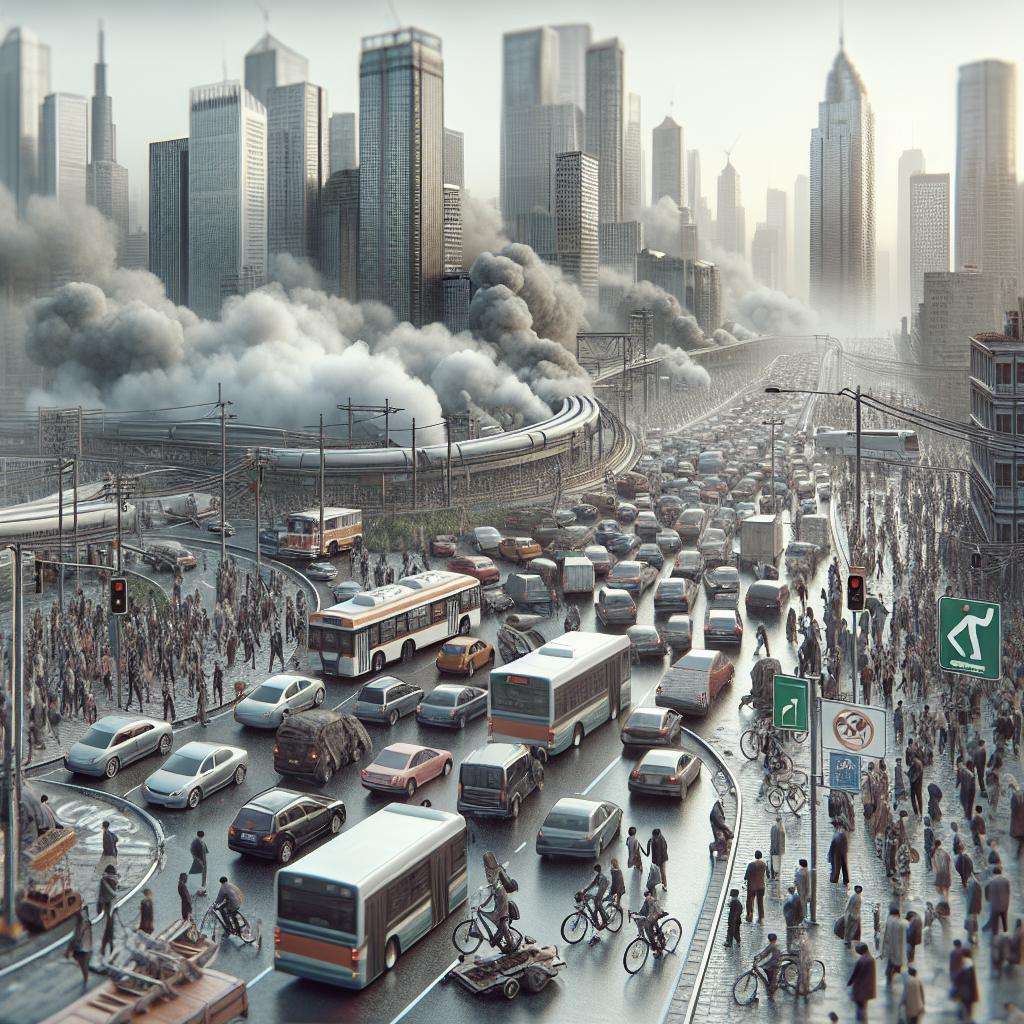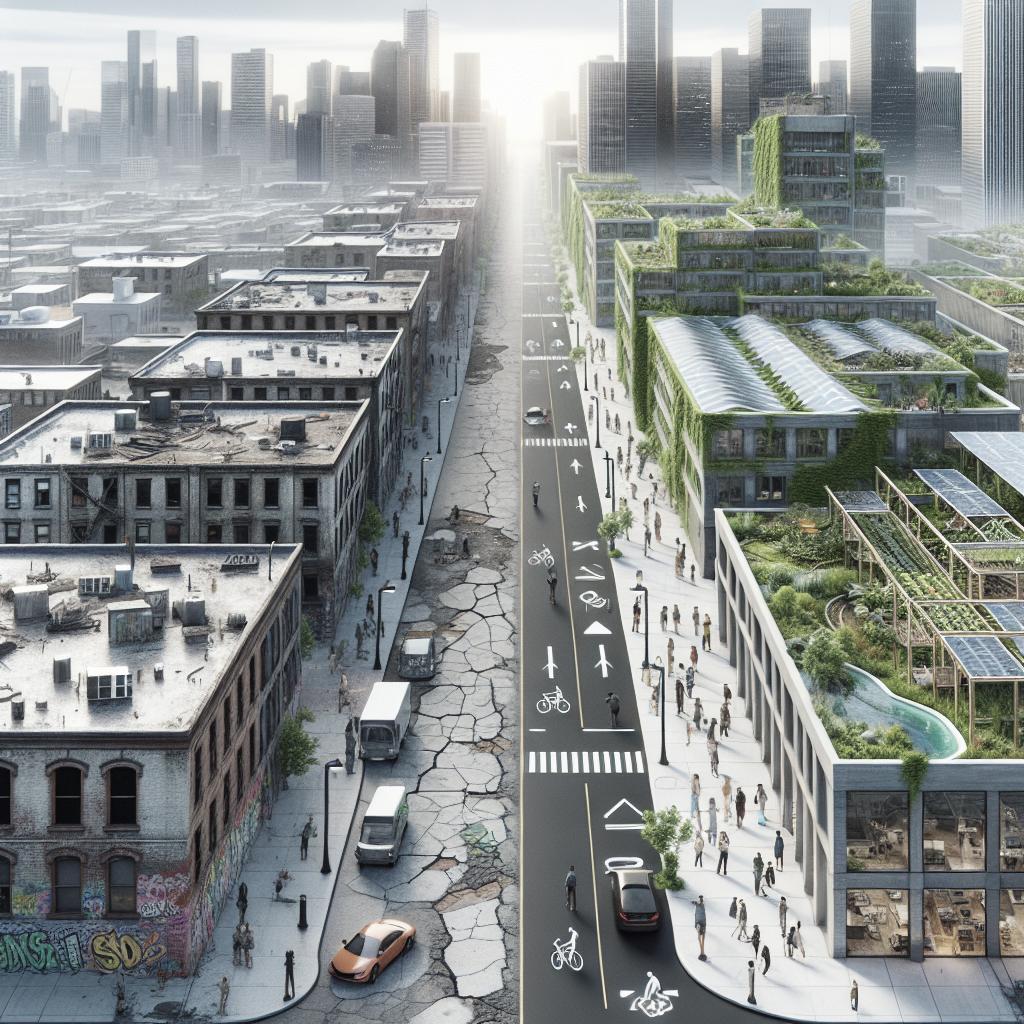<>
Urban transportation plays a crucial role in the life of a city, providing the backbone for economic activities, personal mobility, and overall quality of life. However, numerous challenges hinder the efficiency and sustainability of urban transport systems. From the constant struggle with traffic congestion and parking difficulties, to the inadequacy of public transport options, and the environmental impacts, urban transportation issues are complex and multi-faceted. This blog post delves into the various challenges of urban transportation, ranging from longer commuting times to the high maintenance costs of transport infrastructure. Additionally, it highlights how these issues affect non-motorized transport, the loss of public space, safety concerns, and the intricate process of freight distribution within an urban setting. By understanding these challenges, cities can work towards creating more sustainable and efficient transportation systems for the future.
a. Traffic congestion and parking difficulties
Urban areas across the globe are facing unprecedented levels of traffic congestion. As cities grow, the number of vehicles on the road increases, contributing to congested streets and longer travel times. This congestion not only frustrates drivers but also leads to increased fuel consumption and emissions, exacerbating environmental issues. Finding a parking spot is often an equally daunting task, adding to the overall complexity of urban transportation. Moreover, limited parking spaces mean that valuable city land is often occupied by parking lots and garages, which could otherwise be used for green spaces or other public amenities. Innovative solutions like smart parking systems and car-sharing programs can help alleviate some of these issues, but widespread adoption and infrastructure changes are required for significant impact.
b. Longer commuting
As urban sprawl continues, commuting distances have become longer, leading to extended travel times for many city dwellers. Longer commutes are not only a source of personal stress and reduced quality of life, but also bear economic costs in terms of lost productivity and higher transportation expenses. To mitigate the effects of long commutes, cities are exploring strategies such as developing mixed-use areas where residential, commercial, and recreational activities are in close proximity. This can reduce the need for long journeys and promote healthier, more active lifestyles. Enhanced public transport networks and the promotion of remote work are other effective measures to address this challenge.
c. Public transport inadequacy
In many cities, public transportation systems are unable to keep up with the growing demand. Issues such as outdated infrastructure, infrequent service, and overcrowded buses and trains make public transport less appealing. This inadequacy forces many residents to rely on private vehicles, contributing to further congestion and environmental degradation. Investing in modern public transport infrastructure, including electric buses, high-speed trains, and expanded metro lines, can help address these issues. Additionally, integrating technology to provide real-time updates and efficient route planning can enhance the overall user experience and make public transport a more viable option for daily commutes.
d. Difficulties for non-motorized transport
Non-motorized transport options such as walking and cycling offer significant health and environmental benefits, but often face numerous challenges in urban settings. Poorly maintained sidewalks, lack of dedicated bike lanes, and unsafe crossings make it difficult, and sometimes perilous, for pedestrians and cyclists to navigate cities. To encourage non-motorized transport, cities can invest in better pedestrian infrastructure and develop comprehensive cycling networks that include dedicated lanes and secure parking facilities. Policies promoting “complete streets” that are safe and accessible for all users, regardless of their mode of transport, can also play a critical role.
e. Loss of public space
The increasing dominance of automobiles in urban areas often comes at the expense of public spaces. Streets and parking areas can consume significant portions of city land, leaving fewer places for parks, playgrounds, and social gathering spaces. The loss of public space negatively affects community life, reducing opportunities for social interaction and recreational activities. Urban planning initiatives focusing on re-purposing underused areas and creating more pedestrian-friendly zones can reclaim public spaces. Car-free zones, pedestrian plazas, and green corridors are examples of how cities can balance transportation needs with the importance of public areas for community well-being.
f. High infrastructure maintenance costs
Maintaining urban transportation infrastructure like roads, bridges, and tunnels involves substantial financial resources. Wear and tear from constant use, coupled with the need for regular upgrades to accommodate changing traffic patterns, places a heavy burden on city budgets. Allocating sufficient funding for ongoing maintenance and adopting smart technology for efficient infrastructure management can help cities sustain their transport networks. Furthermore, innovative financing mechanisms like public-private partnerships can provide additional resources for addressing high maintenance costs.
g. Environmental impacts and energy consumption
Urban transport systems are significant contributors to environmental pollution and energy consumption. The reliance on fossil fuels for most vehicles leads to greenhouse gas emissions, air pollution, and energy inefficiency. These environmental impacts not only degrade the urban atmosphere but also contribute to global climate change. Transitioning to sustainable transport options, such as electric vehicles, public transit powered by renewable energy, and promoting non-motorized transport, can significantly reduce the environmental “footprint” of urban transportation. Policies encouraging energy-efficient technologies and alternative fuels can also help mitigate the environmental impacts.
h. Accidents and safety
Urban transportation systems must also address the critical issue of safety. High traffic volumes and diverse road users increase the likelihood of accidents, posing significant risks to drivers, pedestrians, and cyclists. Ensuring safety on the roads is a complex challenge that requires comprehensive strategies. Implementing traffic calming measures, enhancing road infrastructure with safety features like better lighting and clear signage, and promoting road safety education can all contribute to reducing accidents. Leveraging technology, such as automated vehicles and smart traffic management systems, can also play a pivotal role in improving urban transport safety.
i. Land footprint
Urban transportation systems require a significant amount of land for roads, highways, and parking lots. This extensive land use reduces the availability of space for other essential urban functions, such as housing, green spaces, and commercial activities. The large land footprint of transportation infrastructure often leads to inefficient land use in cities. Promoting compact urban development and multi-modal transport systems can reduce the land footprint of transportation. Strategies such as transit-oriented development (TOD) and integrating transport planning with land use policies can create more efficient urban environments.
j. Freight distribution
Efficient freight distribution is vital for the economic vitality of urban areas. However, the movement of goods through cities can contribute to congestion, pollution, and wear on infrastructure. Balancing the needs of freight transport with the overall efficiency of urban transport systems presents a significant challenge. Urban logistics solutions like consolidated delivery centers, the use of smaller electric delivery vehicles, and nighttime delivery schedules can help mitigate the impact of freight transportation. Advanced tracking and routing technologies can enhance the efficiency of goods movement, reducing congestion and environmental impacts.
Related Topics
– The Rise of Car-Sharing Programs in Cities – How Smart Cities Are Revolutionizing Urban Mobility – The Impact of Autonomous Vehicles on Urban Transportation – Urban Planning for Sustainable Transport Systems – The Role of Cyclists and Pedestrians in Modern Cities
Bibliography
1. Rodrigue, Jean-Paul. “The Geography of Transport Systems.” Routledge, 2020. 2. Cervero, Robert. “Public Transport and its Impact on Urban Development.” Journal of Public Transportation, 2009. 3. Anas, Alex, and Ikki Kim. “General Equilibrium Models of Polycentric Urban Land Use with Endogenous Congestion and Job Agglomeration.” Journal of Urban Economics, 1996. 4. Nieuwenhuijsen, Mark. “Urban and Transport Planning, Environmental Exposures and Health-New Concepts, Methods and Policy Initiatives.” Environmental Health, 2016.
Share this:
“`
| Challenge | Summary |
|---|---|
| Traffic Congestion and Parking Difficulties | Increased vehicles lead to congested streets and limited parking space, causing frustration and environmental impact. |
| Longer Commuting | Urban sprawl results in extended travel times, reducing quality of life and economic productivity. |
| Public Transport Inadequacy | Outdated and overcrowded systems push residents towards private vehicles, exacerbating congestion. |
| Difficulties for Non-Motorized Transport | Poor infrastructure and unsafe conditions prevent effective walking and cycling in urban areas. |
| Loss of Public Space | Automobile dominance restricts land available for parks and social spaces, affecting community engagement. |
| High Infrastructure Maintenance Costs | Sustaining roads and bridges is financially burdensome, requiring strategic funding and technological innovation. |
| Environmental Impacts and Energy Consumption | Fossil fuel dependency contributes to pollution and inefficiency, necessitating sustainable alternatives. |
| Accidents and Safety | High traffic volumes raise accident risks, requiring safety measures and technological interventions. |
| Land Footprint | Transportation infrastructure’s extensive land use limits space for essential urban functions. |
| Freight Distribution | Balancing efficient goods movement with urban transport efficiency is crucial but challenging. |
“` The blog post provides a comprehensive overview of the various challenges urban transportation systems face, shedding light on areas that require strategic planning and innovative solutions for the future.

